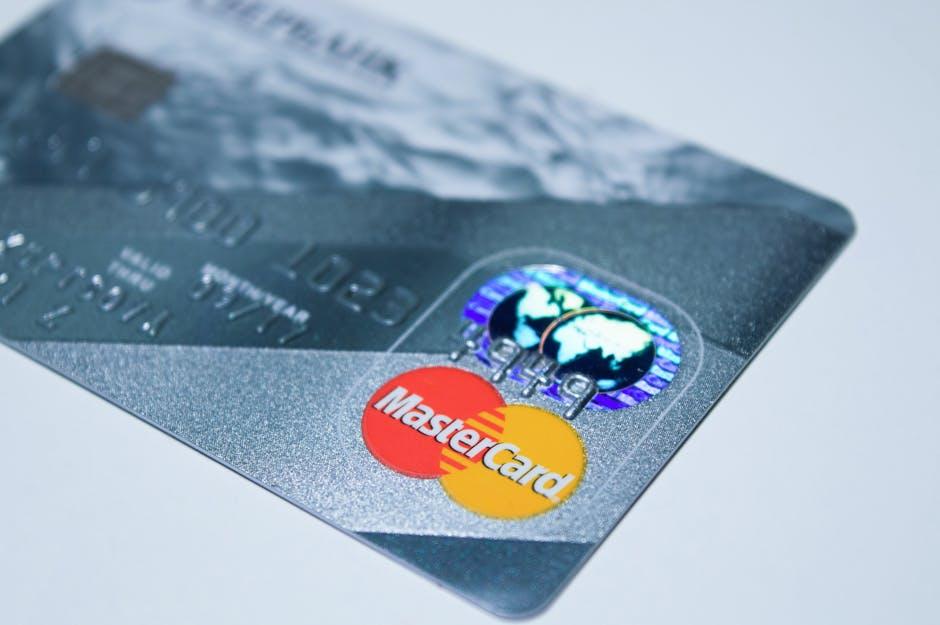In a world where savvy financial decisions can lead to significant savings, low interest rate credit cards stand out as a valuable tool for both managing debt and making substantial purchases. As the market continues to evolve, consumers often find themselves navigating a labyrinth of offers, terms, and hidden fees. Understanding how to unlock the potential of these cards can not only alleviate financial strain but also provide opportunities for rewards and perks. In this article, we will explore the strategies to identify and select the best low interest rate credit cards, ensuring you make informed choices that align with your financial goals. Discover the secrets that can turn your credit card experience from a burden into an asset.
Understanding Credit Scores and Their Impact on Interest Rates
Your credit score is a numerical representation of your creditworthiness, which lenders use to determine the risk of lending you money. Understanding how your credit score influences interest rates can save you significant amounts over time, especially when applying for credit cards, loans, or mortgages.
In the United States, credit scores typically range from 300 to 850. Here’s how different ranges are usually categorized:
| Credit Score Range | Category |
|---|---|
| 300 – 579 | Poor |
| 580 – 669 | Fair |
| 670 – 739 | Good |
| 740 – 799 | Very Good |
| 800 – 850 | Excellent |
Interest Rates and Credit Score Correlation: Lenders consider your credit score as a principal factor in determining the interest rate they will offer you. Higher scores often lead to lower rates because they indicate a lower risk of default. Below are some general impacts of credit scores on interest rates:
- Excellent (740 and above): You may qualify for the best available rates.
- Good (670 – 739): Generally, you’ll receive competitive rates, though not the best.
- Fair (580 – 669): Interest rates will likely be higher, reflecting the increased risk.
- Poor (579 and below): You may face significantly higher rates or difficulty securing credit.
The Impact of a Few Points: Even a small difference in your credit score can affect your interest rate significantly. For example, a score increase from 680 to 700 could potentially lower your mortgage rate by as much as 0.25% to 0.5%. Over the life of a loan, this could translate to thousands of dollars in savings.
Improving Your Credit Score: Here are some actionable steps you can take to improve your credit score:
- Make Payments on Time: Payment history accounts for 35% of your FICO score.
- Reduce Credit Utilization: Aim to use less than 30% of your available credit limit.
- Keep Old Credit Accounts Open: Length of credit history contributes positively to your score.
- Avoid New Hard Inquiries: Too many inquiries in a short period can negatively impact your score.
Understanding these elements can empower you to make informed financial decisions. By keeping your credit score healthy, you not only enhance your chances of obtaining credit but also ensure that you secure it at the most favorable rates available.

Exploring Different Types of Low Interest Rate Credit Cards
Low interest rate credit cards come in several varieties, each designed to meet different financial needs and spending habits. Understanding these types can help you make informed decisions and save money on interest payments.
Here are some prominent types of low interest rate credit cards available in the U.S.:
- Low APR Cards: These cards offer a consistently low Annual Percentage Rate (APR) compared to standard credit cards. They’re ideal for those who may carry a balance month to month. For example, cards from issuers like Capital One and Discover often feature low ongoing rates.
- Introductory APR Offers: Many cards provide a promotional low or 0% APR for a limited time on new purchases or balance transfers. Cards like the Citi Simplicity® Credit Card allow 0% intro APR for 21 months on balance transfers, making it a great choice for managing existing debts while avoiding interest charges during the promotional period [[1]].
- Balance Transfer Cards: These cards are specifically designed for transferring existing debt to take advantage of lower interest rates. They often feature a low or 0% intro APR for balance transfers, typically requiring a small transfer fee. The Best Buy Credit Card and various offerings from banks like Chase fit this category.
| Card Type | Features | Examples |
|---|---|---|
| Low APR Card | Consistently low ongoing APR | Capital One, Discover |
| Introductory APR Offer | 0% APR for first 6-21 months | Citi Simplicity® |
| Balance Transfer Card | Low or 0% APR on transfers | Chase, Best Buy Credit Card |
By understanding the different types of low interest credit cards, you can select one that aligns with your financial goals. Whether you’re looking to manage debt more effectively or simply reduce interest costs, there’s likely a card that suits your needs.

Tips for Comparing Credit Card Offers Effectively
When it comes to comparing credit card offers, being well-informed can save you money in the long run. Here are some tips to help you navigate through various options and find the best deal:
- Understand Your Spending Habits: Analyze your monthly expenses to determine what categories you spend on most, such as groceries, travel, or gas. This will help you choose cards that offer the best rewards or cashback in those areas.
- Check the Annual Percentage Rate (APR): Look beyond promotional rates. Many cards offer a low introductory APR, but after this period, rates can spike. Always check the standard APR for a clearer picture of potential costs.
- Review Fees: Pay attention to any annual fees, foreign transaction fees, and late payment fees. Some cards may offer fantastic rewards but come with high fees that could negate the benefits.
- Explore Rewards Programs: Different cards come with unique rewards structures. Consider cash back, points, or miles based on your lifestyle. For example, if you travel frequently, a card with air travel rewards may be advantageous.
- Utilize Comparison Tools: Websites like NerdWallet or Credit Karma can help you easily compare multiple credit cards side by side, assessing important variables like rewards, fees, and APR.
- Read Customer Reviews: Check out feedback from current cardholders. Sometimes features or customer service can dramatically differ from what is advertised.
| Card Type | APR Range | Annual Fee | Rewards Type |
|---|---|---|---|
| Cash Back Card | 15% – 25% | $0 – $95 | Cash Back on Purchases |
| Travel Rewards Card | 16% – 24% | $0 – $550 | Points or Miles for Travel |
| Balance Transfer Card | 12% – 22% | $0 – $75 | Cash Back, Points |
By keeping these tips in mind, you can confidently compare credit card offers and select one that aligns with your financial goals. Whether you’re looking for low interest rates or lucrative rewards, a little research goes a long way in finding the card that suits your needs.

Maximizing Benefits While Minimizing Costs
When it comes to finding a credit card that offers low interest rates while providing valuable benefits, understanding how to maximize your advantages can make a significant difference in your financial health. Here are some strategies that can help you keep costs low while enjoying the perks of your credit card:
- Utilize Introductory 0% APR Offers: Many low-interest credit cards come with promotional periods where you can enjoy 0% APR on purchases and balance transfers. This is an excellent opportunity to manage your expenses without accumulating interest. Be sure to pay off the balance before the promotional period ends to avoid higher rates.
- Consider Annual Fees vs. Benefits: Some cards with low interest rates may charge an annual fee. Evaluate if the benefits, such as rewards or cashback, outweigh this cost. If the benefits exceed the fee, it might be worth it.
- Make Timely Payments: Consistently paying your bill on or before the due date not only avoids late fees but can also positively impact your credit score, potentially qualifying you for even better interest rates in the future.
- Transfer Balances Wisely: If you have existing credit card debt, look for low-interest cards that offer balance transfer promotions. This can consolidate your debts and reduce the total interest paid over time.
- Leverage Rewards Programs: Some low-interest cards have valuable rewards or cashback programs. Make your spending work for you by choosing a card that rewards your everyday purchases, thus providing additional savings while you manage your debt.
- Review Your Credit Report: Knowing your credit score can help you identify which low-interest cards you qualify for. Checking your credit report regularly ensures that all information is accurate, allowing you to maintain or improve your score.
Below is a comparison of some popular low-interest credit cards available in the market:
| Credit Card | Introductory APR | Regular APR | Annual Fee | Rewards |
|---|---|---|---|---|
| Blue Cash Preferred® Card | 0% for 12 months | 13.99% – 23.99% | $95 | 3% on groceries, 1% on other purchases |
| Discover it® Cash Back | 0% for 14 months | 13.99% – 24.99% | No annual fee | 5% cash back on rotating categories |
| Chase Freedom Unlimited® | 0% for 15 months | 14.99% – 23.74% | No annual fee | 1.5% on every purchase |
By implementing these strategies, you can effectively navigate the world of low-interest credit cards, ensuring that you maximize benefits while keeping costs to a minimum.

In Retrospect
As we draw the curtain on our exploration of low interest rate credit cards, it’s clear that the world of credit is both vibrant and intricate. By understanding the nuances and researching your options, you can unlock the doors to financial relief and smarter spending. Remember, the key lies in not just seeking the lowest rates but also in identifying cards that align with your spending habits and financial goals. Take your newfound knowledge and approach credit with confidence-each decision is a step towards a secure financial future. May your journey in financial literacy pave the way for wise choices and rewarding benefits!











